Peroxisome proliferator-activated receptor gamma ligands inhibit development of atherosclerosis in LDL receptor-deficient mice
- PMID: 10953027
- PMCID: PMC380255
- DOI: 10.1172/JCI10370
Peroxisome proliferator-activated receptor gamma ligands inhibit development of atherosclerosis in LDL receptor-deficient mice
Abstract
The peroxisome proliferator-activated receptor gamma (PPARgamma) is a nuclear receptor that regulates fat-cell development and glucose homeostasis and is the molecular target of a class of insulin-sensitizing agents used for the management of type 2 diabetes mellitus. PPARgamma is highly expressed in macrophage foam cells of atherosclerotic lesions and has been demonstrated in cultured macrophages to both positively and negatively regulate genes implicated in the development of atherosclerosis. We report here that the PPARgamma-specific agonists rosiglitazone and GW7845 strongly inhibited the development of atherosclerosis in LDL receptor-deficient male mice, despite increased expression of the CD36 scavenger receptor in the arterial wall. The antiatherogenic effect in male mice was correlated with improved insulin sensitivity and decreased tissue expression of TNF-alpha and gelatinase B, indicating both systemic and local actions of PPARgamma. These findings suggest that PPARgamma agonists may exert antiatherogenic effects in diabetic patients and provide impetus for efforts to develop PPARgamma ligands that separate proatherogenic activities from antidiabetic and antiatherogenic activities.
Figures
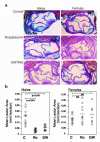
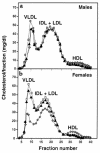
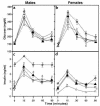
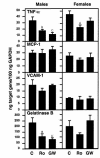
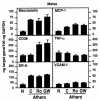
Comment in
-
Peroxisome proliferator-activated receptor gamma ligands and atherosclerosis: ending the heartache.J Clin Invest. 2000 Sep;106(5):629-31. doi: 10.1172/JCI10909. J Clin Invest. 2000. PMID: 10974014 Free PMC article. No abstract available.
References
-
- Kannel W, McGee D. Diabetes and cardiovascular disease: the Framingham study. JAMA. 1979;241:2035–2038. - PubMed
-
- Uusitupa M, Niskanen L, Siitonen O. 5-year incidence of atherosclerotic vascular disease in relation to general risk factors, insulin levels, and abnormalities in lipoprotein composition in non-insulin-dependent diabetic and nondiabetic subjects. Circulation. 1990;82:27–36. - PubMed
-
- Steinberg D, Parthasarathy S, Carew TE, Khoo JC, Witztum JL. Beyond cholesterol. Modifications of low-density lipoprotein that increase its atherogenicity. N Engl J Med. 1989;320:915–924. - PubMed
-
- Napoli C, et al. Fatty streak formation occurs in human fetal aortas and is greatly enhanced by maternal hypercholesterolemia. Intimal accumulation of low density lipoprotein and its oxidation precede monocyte recruitment into early atherosclerotic lesions. J Clin Invest. 1997;100:2680–2690. - PMC - PubMed
Publication types
MeSH terms
Substances
Grants and funding
LinkOut - more resources
Full Text Sources
Other Literature Sources
Molecular Biology Databases

